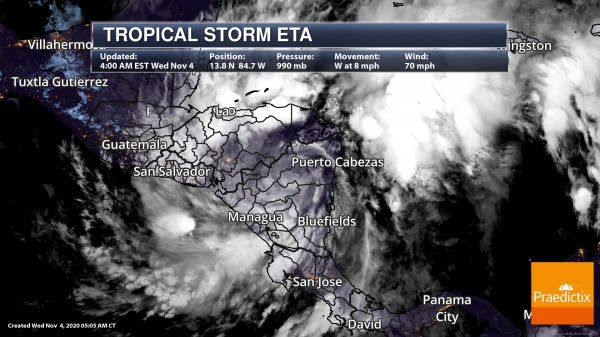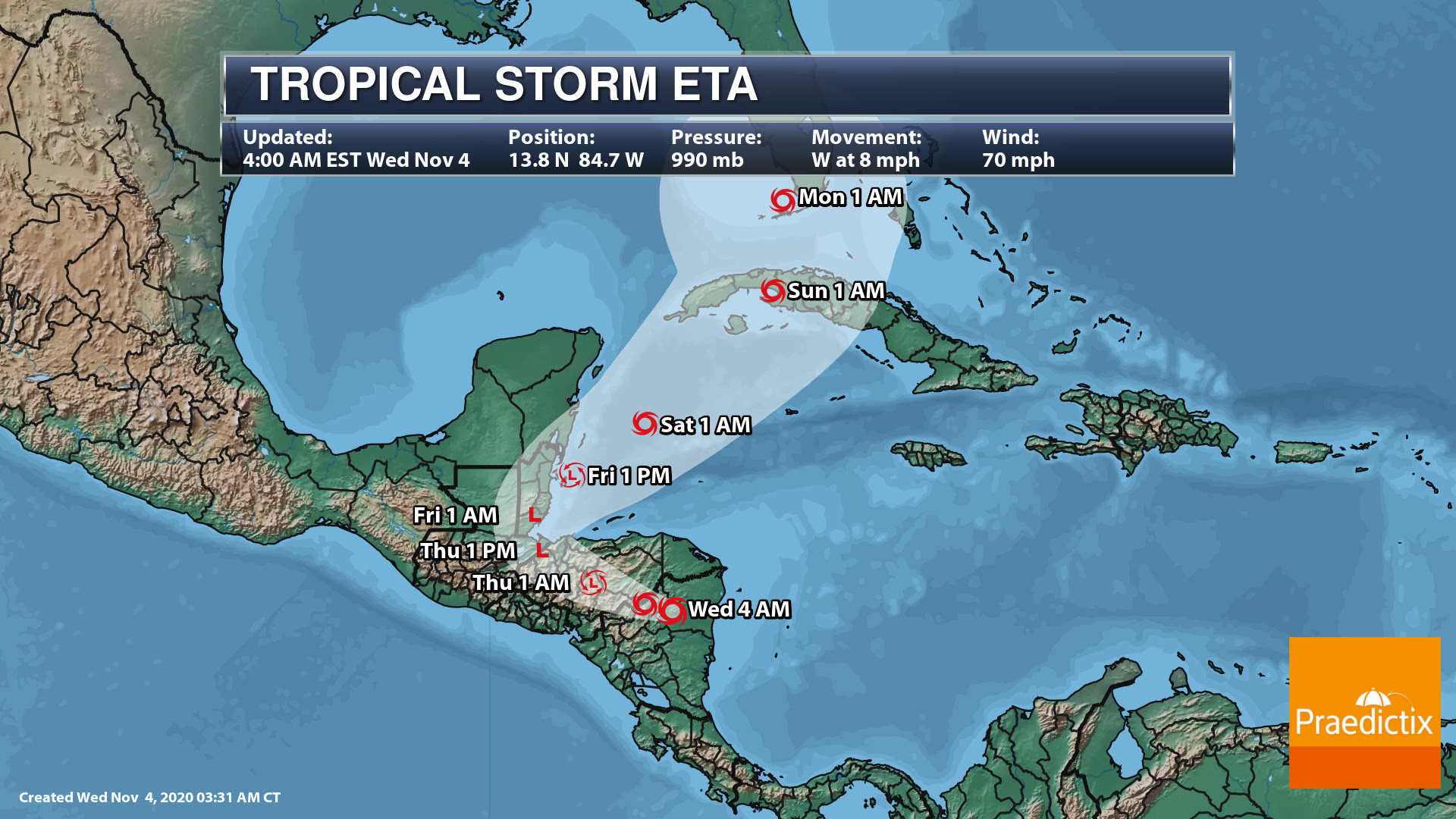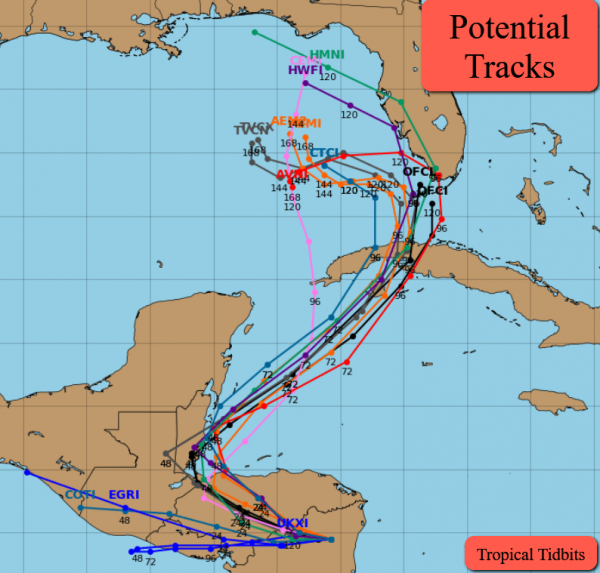A Few More 70s, Then Slushy Snow Next Week?
“It’s tough to make predictions, especially about the future” New York Yankee Yogi Berra famously uttered.
No kidding. I almost feel bad for the pollsters, with their fancy models and confident projections. Once again they made meteorologists look good, which is hard to do.
Predicting the future is hard, a tenuous mix of art and science. The accuracy of your forecast depends on the quality of data you feed into models, which aren’t perfect, just rough simulations of reality. Weather forecasters deal with this every day. Some models are better than others. We try to adjust for bias – and
acknowledge when confidence levels are low.
I appreciate Mother Nature’s attempt to mellow us out this week (nice try) and supernatural weather bliss spills into the weekend. This may wind up being the warmest first week of November in Minnesota history. 3 more days at or above 70F at MSP by Monday? Yep. A puff of colder air arrives next week.
And don’t get cocky. ECMWF is hinting at slushy snow by next Wednesday. Oh boy.
Paddleboarding in November. Not me, no way. I have brave neighbors… (Photo credit: Paul Douglas)
Tuesday Records. What’s impressive is that this late-season warm spell is statewide. Tuesday record highs included 70F for International Falls and 69F at Baudette.
75F Wednesday at MSP. It was the third warmest November day on record in the Twin Cities, according to the Minnesota DNR and State Climatology Office.
Praedictix Briefing: Issued Wednesday, November 4th, 2020:
Tropical Storm Eta

Eta Inland Over Nicaragua. A very strong Hurricane Eta made landfall yesterday afternoon near Puerto Cabezas, Nicaragua, and has been weakening since. As of 4 AM ET, Eta was a tropical storm with winds of 70 mph located about 90 miles west of Puerto Cabezas. Eta was moving west at 8 mph.


Tracking The Future Of Eta. While Eta will continue to weaken across Central America over the next couple of days – likely a tropical depression by tonight and a post-tropical low tomorrow – life-threatening torrential rains and flooding will continue to occur across portions of Central America, with flash flooding possible as far east as portions of Jamaica and the Cayman Islands. However, even if the surface low fades away, the upper level circulation with the system is expected to survive and could help the system regenerate as it moves back into the northwestern Caribbean Sea Friday. After that point, Eta would begin to strengthen again and could impact portions of Cuba and southern Florida heading into the weekend and early next week with wind and rain. As the second graphic shows, Eta is expected to pass fairly close to southern Florida and the Florida Keys late this weekend or early next week before jaunting westward into the Gulf of Mexico. From there, models have a potential landfall near or along the Florida Panhandle toward the middle or end of next week. Please note there is a sizeable amount of uncertainty in the forecast of this system once we get 3+ days out right now, especially as we’d be dealing with a system that has to regenerate, but facilities across Florida (particularly in southern Florida and the Keys) should continue to monitor the track of this system over the next several days.
D.J. Kayser, Meteorologist, Praedictix.
More Durable Radars Are Needed For an Era of Stronger Hurricanes. Dr. Marshall Shepherd reports for Forbes: “…According to University of Miami hurricane expert Brian Mcnoldy, Hurricane Zeta marked the fifth landfall during the state, three of which were hurricanes. In August, Hurricane Laura (2020) knocked out the National Weather Service radar at its Lake Charles office. Unfortunately, the same region faced threats from Hurricanes Delta (2020) and Zeta (2020), respectively, after Laura. As I sit at my computer tracking an unprecedented Hurricane Eta (yep, Eta), strong and rapidly intensifying storms in recent years raises the following question for me: Do we need more durable weather radar infrastructure for an era of stronger hurricanes?…”
Image credit: “NEXRAD Doppler radar in Puerto Rico after Hurricane Maria.” NOAA Climate.gov.
Moderate to Strong La Nina Event Develops in the Pacific. BBC News has an update: “…There is a 55% chance of the conditions persisting through the first quarter of next year. While a La Niña event normally exerts a cooling influence on the world, this is unlikely to make too much of a difference to 2020. “La Niña typically has a cooling effect on global temperatures, but this is more than offset by the heat trapped in our atmosphere by greenhouse gases,” said Prof Petteri Taalas, from the WMO. “Therefore, 2020 remains on track to be one of the warmest years on record and 2016-2020 is expected to be the warmest five-year period on record,” he said “La Niña years now are warmer even than years with strong El Niño events of the past...”
How the Oklahoma Ice Storm Helped Strengthen Hurricane Zeta Beyond Expectations. Here’s an excerpt of a good explainer from Capital Weather Gang: “…The hurricane managed to capitalize on upper-level winds streaming through Texas and Oklahoma generated by an unusually sharp dip in the jet stream for late October. This dip allowed record cold to crash through the northern Rockies and into the Plains, with temperatures up to 60 degrees colder than average and as low as minus-33 degrees. The upper level winds roaring from south to north along the eastern flank of the jet stream dip facilitated diverging air flow above and out ahead of the hurricane. This encouraged air to rise, cool and condense into clouds and precipitation, and led to an increase in thunderstorm intensity within Hurricane Zeta, which overwhelmed anything that might inhibit it...”
Image credit: “Visible satellite image from Wednesday showing Hurricane Zeta moving ashore in Louisiana, an ongoing ice storm over Texas and Okla., and smoke plumes from fires in Southern California.” (CIRA/RAMMB).
What Happens When You Fly a Science Plane Through Wildfire Smoke. WIRED.com (paywall) has details: “…Wildfire smoke is made up of two components: gases and particulates. The gases include carbon monoxide and dioxide, while particulates are tiny bits of charred vegetation. When a wildfire burns intensely, its heat drives air upward, carrying all this muck high into the atmosphere, where winds sometimes blow the smoke thousands of miles. Among fire researchers, smoke at the source is known as “fresh,” but after a few hours, it’s known as “stale.” It can be up in the atmosphere for days, getting really stale, during which time the gases and particulates are reacting not only with each other, but also with sunlight and gases already present in the atmosphere. By the time the smoke from West Coast wildfires reaches the East Coast, it’s fundamentally transformed...”
Photo credit: “A bevy of instruments collected mountains of data about the smoke.” Photograph: Hannah Hickey/University of Washington.
Hot or Cold: Weather Alone Has No Significant Effect on COVID-10 Spread. ScienceDaily has the report: “…Research led by The University of Texas at Austin is adding some clarity on weather’s role in COVID-19 infection, with a new study finding that temperature and humidity do not play a significant role in coronavirus spread. That means whether it’s hot or cold outside, the transmission of COVID-19 from one person to the next depends almost entirely on human behavior. “The effect of weather is low and other features such as mobility have more impact than weather,” said Dev Niyogi, a professor at UT Austin’s Jackson School of Geosciences and Cockrell School of Engineering who led the research. “In terms of relative importance, weather is one of the last parameters…”
File image: CDC.
Wrong Way to Transport a Snowmobile: Exhibit A. Bring Me The News has the rather unusual story: “Snowmobiling season is right around the corner, but transporting a snowmobile on top of a car is not the way to get the recreational vehicle where you want it to be. One Minnesota motorist driving a Toyota Corolla found that out the hard way. According to the Wisconsin Department of Transportation, someone driving the small red car had a Polaris snowmobile strapped to the top of the car, with the skis of the snowmobile sticking out horizontally over the left side of the car…”
Photo credit: Wisconsin DOT.
74 F. high yesterday, a record high for November 4 in the Twin Cities.
48 F. average high at MSP on November 4.
40 F. daytime high on November 4, 2019.
November 5, 1941: A snowstorm hits southern Minnesota, with the heaviest snow at Fairmont.
THURSDAY: Sunny, a bit “cooler”. Winds: NW 5-10. High: 66
FRIDAY: Partly sunny with a mild breeze. Winds: S 10-20. Wake-up: 50. High: 72
SATURDAY: Windy with plenty of sunshine. Winds: S 15-30. Wake-up: 55. High: 72
SUNDAY: Some sun, late PM T-shower risk. Winds: S 15-30. Wake-up: 57. High: 71
MONDAY: More numerous showers, turning colder. Winds: NW 10-20. Wake-up: 50. High: 54
TUESDAY: Dry start, wet snow possible late. Winds: N 10-20. Wake-up: 33. High: 41
WEDNESDAY: Much uncertainty. Few inches of snow? Winds: NW 10-20. Wake-up: 30. High: 33
Photo credit: Paul Douglas.
Climate Stories…
These Obscure Races May Decide the Future of Climate Change. Mother Jones looks at generally overlooked races and potential impact on climate policy: “…This year, national green groups like the Sierra Club, League of Conservation Voters, and Michael Bloomberg’s Beyond Carbon have spent millions on these usually overlooked statewide races, especially in Texas, Arizona, and Montana. But it isn’t just the green money that has brought new attention to these races. The politics have also shifted, as climate change has become a top priority for Democratic voters. “You see the difference in how most of these races, the Democratic challengers are running explicitly as clean energy candidates,” Pomerantz says. “Maybe 10 years ago, Democrats would run on a promise to keep people’s rates low. Now they’re running as the solar team.”
File image: Scott Kelly (now Arizona U.S. Senator-elect Scott Kelly), NASA ISS.
Making Sense of Trump’s Energy Era. Axios reports: “Market forces have been in the driver’s seat during President Trump’s first term, which means oil-and-gas kept growing (until the pandemic), he couldn’t revive coal, and the country stayed far away from policies that would drive steep future carbon cuts. Where it stands: The administration launched a big deregulatory push to scuttle Obama-era climate policies and support coal, oil and gas. Here are a few snapshots of what happened over the last four years.
- Carbon emissions haven’t moved greatly in either direction, as the chart above shows. (Of note: It doesn’t show this year, which would display a steep decline due to the pandemic’s effect on travel and economic activity.)…”
Image credit: EIA; Chart: Andrew Witherspoon/Axios.
Climate Change – and Research – Raced Forward as Trump Turned His Back. Here’s the intro to a post at Scientific American: “The Trump administration has spent four years consciously ignoring—and often working against—scientists’ efforts to raise the alarm about climate change. In the wake of hurricanes, floods, wildfires and extreme heat, President Trump has continually questioned the science of global warming. A deep cynicism of scientists flavored his policy decisions, such as withdrawing the U.S. from a global climate agreement and unraveling dozens of environmental regulations. Trump’s unchanging stance on climate is punctuated against the backdrop of historic disasters and momentous scientific strides that have occurred since he took office…”
Shell Shocked Twitter Dunks On Its ‘Greenwashing’: Climate Nexus has headlines and links: “On Monday, oil company Shell, the seventh-most carbon polluting company in the world, polled Twitter users as part of their promotion of an energy debate they put on, asking “what are you willing to change to help reduce emissions?” Results were likely more critical than the company must have expected, ranging from answers like “your business model” to a map showing the short walk from Shell’s headquarters to the International Criminal Court. Greta Thunberg responded with her willingness to call out greenwashing companies like Shell, as did Rep. Alexandria Ocasio-Cortez, who tweeted that she’s “willing to hold you accountable for lying about climate change for 30 years when you secretly knew the entire time that fossil fuels emissions would destroy our planet .” (The Guardian, Grist, Earther, EcoWatch)
Website excerpt: Shell.com.
How Will America Leaving Paris Accord Impact Emissions and Climate Action? ABC News has the analysis; here’s an excerpt: “…The historic accord seeks to limit global warming to less than 2 degrees Celsius, the value that climate scientists have determined will have disastrous consequences if exceeded. Trump has assailed the agreement as economically detrimental and claimed it could cost the country 2.5 million jobs by 2025. He also said it gave other major emitters, such as China, a free pass. While a number of environmental policy experts believe the move was a step back from what was previously seen as an era of environmental responsibility during the Obama administration, several who spoke to ABC News on the issue agreed that the U.S. has the ability to regain a title as a world leader in climate action in the coming years…”
File image: Scott Kelly, NASA ISS.
The Politics of Climate Change Largely Set Aside in Pandemic Year. KPBS.com has the story; here’s a clip: “…He said major party candidates in San Diego County and California ignore climate change at their own peril. The issue is important here because voters are getting first-hand proof that a changing climate will affect them. “When you see wildfires and you see seawater rise and floods that come from that when you see hurricanes on the Gulf coast. These physical embodiments of climate change are what will bring it from an issue right now that is in the top ten of most voter’s concerns to an issue that will be a top tier issue that every politician will need to address,” Kouser said. But California’s acceptance of climate change has not broken through in a meaningful way in the national political arena...”
File image: NOAA.
Climate Crisis Beaks Open Generational Rifts in US Families. The Guardian reports; here’s an excerpt: “…While polling shows a clear majority of Americans accept that the climate is changing and want the federal government to respond to the myriad threats this poses, the issue has been polarized in the US to extremes not seen in other leading democracies. An ideological aversion among Republicans to accept climate science and act against fossil fuel interests has led to two starkly different visions laid out by the 2020 presidential candidates. While Trump has rolled back dozens of pollution regulations, dismissed and sidelined climate science and pulled the US from the Paris climate accords, Joe Biden is pushing a $2tn plan to create a 100% clean energy grid within 15 years, and has called the climate crisis “an existential threat” to the US…”


